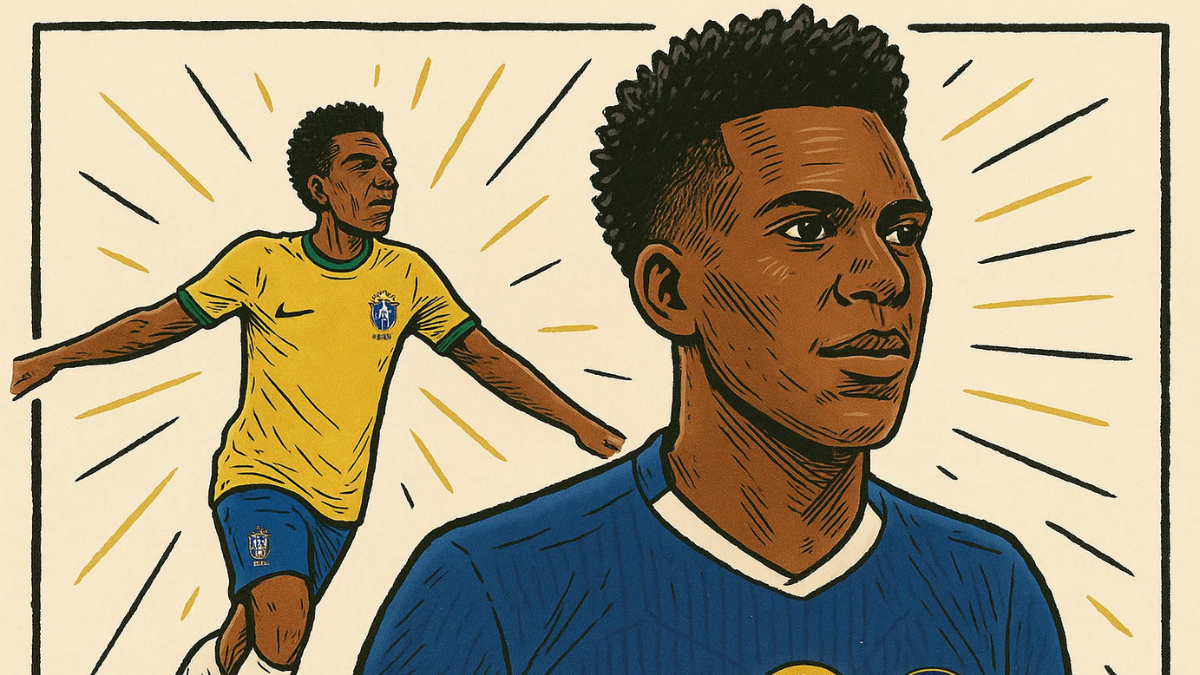
Chelsea wanted a winger who could change a game with one touch. In his first weeks in London, 18‑year‑old Estêvão Willian has already delivered the kind of moments that alter a season’s mood, including a 95th‑minute winner against Liverpool at Stamford Bridge. Four days later he scored twice in Brazil’s 5‑0 rout of South Korea in Seoul, a sprint from promise to proof that now stretches across club and country.
He did not appear overnight. Chelsea agreed to sign him from Palmeiras in 2024 for an initial €34 million, about $37 million, with performance add‑ons that could push the package toward €67 million, roughly $71 million. The move became official after his 18th birthday in 2025, and he walked into a first team that trusted his courage, not just his energy. In his first league start he became the youngest Chelsea player to register a Premier League assist, squaring for Enzo Fernández at West Ham. “He’s different from anything I’ve ever seen,” Palmeiras coach Abel Ferreira said last year, the line that keeps following him as the stage gets bigger.
The conversation around him splits in two. Some insist he is the next Neymar, others still lean on the early nickname “Messinho.” He would rather be neither. He says the nickname felt like baggage he never wanted, proof that labels can show up long before the minutes do. In 2024 Neymar offered a plain verdict: “I think he’s going to be a genius.” The line cut through the chatter.
A highlight reel doesn’t make a player, even if his best clips say plenty. Estêvão’s right foot, once a developmental focus at Palmeiras, has already paid off in England. His brace for Brazil in Seoul showed the other part of the picture, a willingness to run beyond the ball and finish cleanly when the space appears. The reaction machine has produced side‑by‑side clips and quick jokes, but scouts focus on repeatable actions: a first touch that settles pressure, a change of pace that forces defenders to turn, and a calm last step in the box. That is the profile of a teenager who can change the match’s rhythm without needing twenty touches.
He is being touted as the next Neymar for a reason, but his lane is different. Neymar’s rise carried street football swagger into a free‑role star turn. Estêvão is a right‑side organizer who can beat a man, then play the disguised pass that breaks a line. The tag “next Neymar” might sell a headline, yet the way he attacks the right half‑space is closer to a creator who organizes attacks with a scorer’s instincts.
Where he fits in Brazil’s 2026 picture
Carlo Ancelotti has tightened Brazil with a clean 4‑3‑3 shape, asking wingers to run behind as often as they receive to feet. On the right, Estêvão’s left foot lets him cut inside at speed or slip the overlap, which complements Vinícius Júnior’s gravity on the left and frees Rodrygo to rotate centrally. The competition is sharp with Rodrygo and Raphinha, so his most likely role at the 2026 World Cup is the first winger off the bench, a 20‑to‑30‑minute spark. His brace in Seoul fits that projection.
He doesn’t need the full ninety to change how the night unfolds. Give him a lane and one early pass and he’ll make it count.
What happens between now and June will decide his starting line on the tournament ladder. Chelsea’s use of him suggests trust in high‑leverage moments, the kind of minutes that teach tempo and restraint. That matters more than raw totals. If he keeps stacking short, sharp cameos that end in chances or goals, he becomes impossible to leave out of knockout plans. For a teenager, success looks like 150 to 250 tournament minutes that change at least one game.
There are cautions to consider. The Premier League will continue to test his decisions every three days, and international football compresses time for young attackers. Ancelotti’s Brazil will also be judged on control and balance, not just highlights. That is the good news for Estêvão. A wide player who presses, runs behind, and creates hesitation fits that brief, which is why he already looks less like a luxury and more like a live option for a coach who values clarity. For a deeper read on the coach’s blueprint, see Ancelotti.
The noise around him will swell, and so will the incentives that come with it. Talk of individual awards will flare if he keeps deciding big moments, which is why context matters: his game is built on simple choices at high speed, not constant showreels. That is the kind of football that wins tournaments, even if it does not always lead the clips. If you want a refresher on how the award conversation actually works, here is a primer on the Ballon d’Or.
The truth is simpler than any label. Estêvão creates hesitation. Center backs lean toward his left, he shifts right. Fullbacks sit on the pass, he carries. In tournament football, hesitation opens the half‑yard where games are won. Brazil may not need him to start every match next summer. They will need him ready when the grass opens in front of him.
This story is part of 433Futbol’s Hispanic Heritage Month series, celebrating the cultural and footballing connections that shape the modern game. From Brazil’s rhythmic brilliance to the next generation of Latin American stars rising in Europe, these stories honor how fútbol’s creativity, flair, and resilience continue to inspire communities across the Americas and beyond.